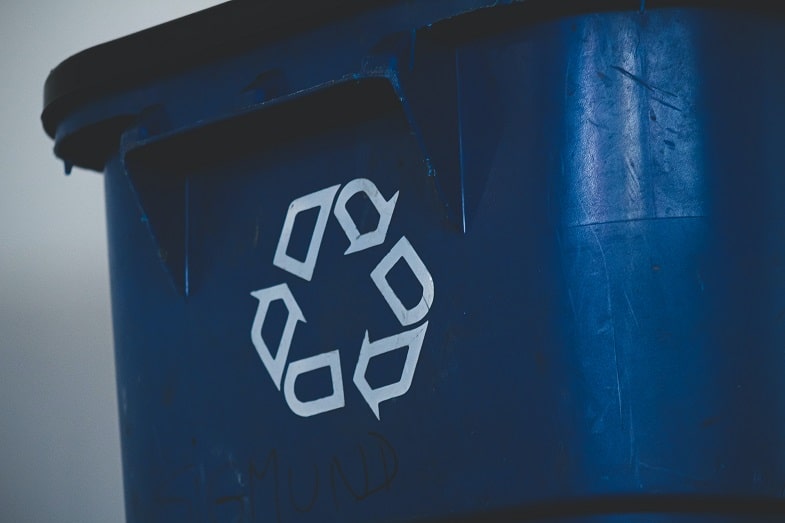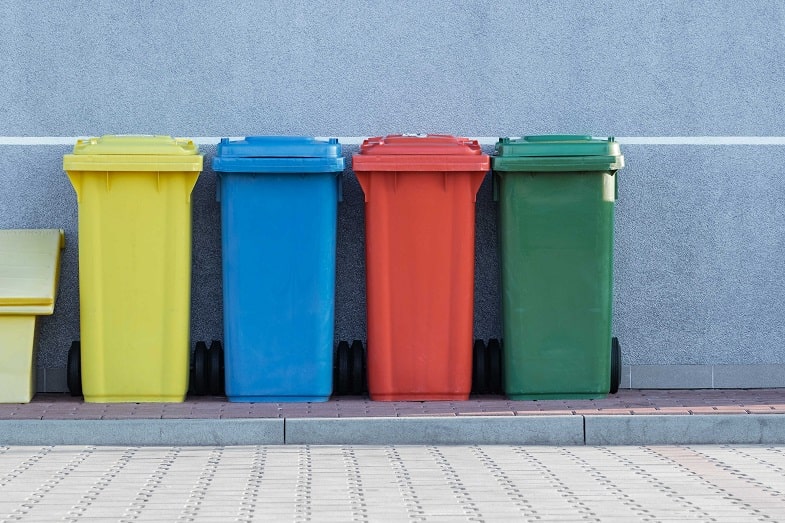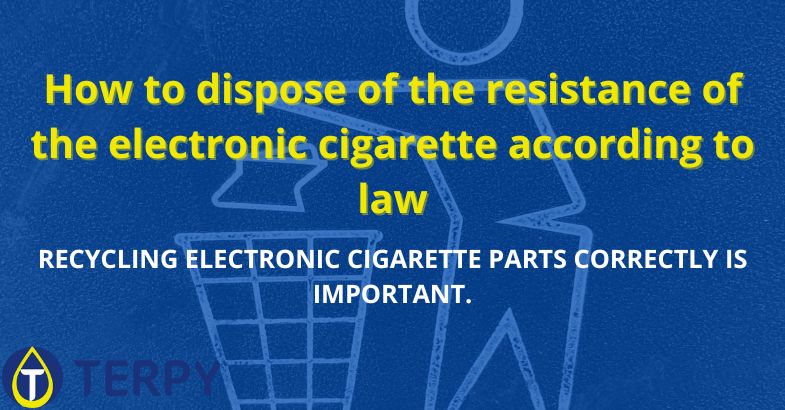Published on: 31/10/2023
RECYCLING ELECTRONIC CIGARETTE PARTS CORRECTLY IS IMPORTANT.
It is for the environment, because the components of the e-cig can be very polluting, and for themselves, because throwing incorrectly, or worse abandoning in the environment electronic and mechanical parts of the electronic cigarette, you risk fines, even heavy
Among the components that must be disposed of according to precise rules is resistance: let’s find out what the rules say about it and what may cause non-compliance with the provisions of the law.
Read also: Variable voltage electronic cigarette: how does it work?
What is and how is electronic cigarette resistance made
Resistance is the component that heats the liquid for the electronic cigarette, allowing the production of steam and the release of aromas. It consists of a mechanical spiral thread and a cotton wick, which absorbs the liquid: when the resistance heats up, the liquid is vaporized so as to allow the vaping. We understand well, therefore, how important functional resistance is for a pleasing vaping, which allows us to taste all the nuances of aromas.
The resistance tends to wear out and needs to be replaced quite often. The durability depends on the quality of the component, the frequency of use, the maintenance: also the way it flares affects the durability of the resistance.


In general, the resistance should be replaced at least once a month, but if it is malfunctioning or particularly worn, it may be necessary to replace it every 7-14 days.
When you feel a feeling of burnt aroma, or an almost tasteless aroma, or still hear a gurgling sound and steam production is poor, it means the time to dispose of the resistance has come.
Regulations and provisions on the disposal of resistance of electronic cigarettes
Meanwhile, let’s say immediately that the e-cigarette is a WEEE, a special waste, which must be disposed of according to precise rules.
WEEE is the acronym of Waste Electronic and Electrical Equipment: the EU directive that regulates the collection and disposal of this type of waste is the 2012/19/EU, transposed in Italy in 2014 by Legislative Decree 49/2014.
Products with the symbol of the barred bin, accompanied by the CE mark, are usually WEEE.
The directive explains in detail the objectives and the way in which electronic waste should be disposed of.
The objectives are different:
reduce waste of raw materials and natural resources;
preventing pollution and the illegal export of electronic devices to developing countries;
to encourage recycling;
reduce differences in the registration of WEEE producers in different countries.
In addition to imposing precise construction instructions on producers, the standard also illustrates how special WEEE waste must be delivered: they can be taken to the municipal ecological islands, or ask for home collection, or even bring them from an authorized dealer, preferably from whom we purchased the device. Producers include the costs of disposal in the final price of WEEE.
Throwing devices such as smartphones, tablets and electronic cigarettes in the undifferentiated or dispersing them in the environment is a serious mistake, which can pollute the separate collection and create many problems. In addition, if you are caught abandoning appliances and other devices, sanctions are quite salty: the crime of abandonment of waste, provided for by TUA, provides a penalty of 300 to 3,000 euros if the material is not dangerous, up to double if the material is considered dangerous.
Read also: Electronic cigarette with large tanks: yes or no?
How to dispose of the resistances of electronic cigarettes correctly
The resistance is part of the WEEE that, as we have seen, must be disposed of in special ecological islands or reported by the seller from whom we bought the e-cig.
It is a mistake to throw this component of the electronic cigarette in the undifferentiated, as well as the other parts of the e-cig (except the spouts): we are in fact talking about an electronic device, just like the smartphone, which, if dispersed in the environment, causes serious damage.


We advise you to put away the worn resistances, perhaps in a small box: once accumulated in a good number, bring them all to the ecological island of your city or from the dealer you bought it from, retailer who will dispose of them according to law.
The improper disposal of the resistances of electronic cigarettes can have a negative environmental impact: avoid throwing them into the undifferentiated and even less to disperse them in the environment, because in addition to polluting would also risk a heavy penalty.
In conclusion
The resistances of the electronic cigarette, the part that heating allows the e-liquid to become steam, are WEEE, special electrical waste, and must be conferred in the municipal ecological islands, which are responsible for collecting all the electrical and electronic equipment, or returned to the retailer from where we bought them.
The resistances, as well as the other electrical parts of the e-cig, should not be thrown into the undifferentiated or, even worse, dispersed in the environment: they are dangerous materials for the environment, highly polluting, which risk compromising the already precarious environmental health. In addition, if you are surprised to abandon electronic equipment around, you risk very high fines, up to 3,000 euros.
That’s why you should collect all the worn resistances in a dedicated container and then take them to the ecological island of your city.





